World
About Andrew Cusack
 Writer, web designer, etc.; born in New York; educated in Argentina, Scotland, and South Africa; now based in London.
Writer, web designer, etc.; born in New York; educated in Argentina, Scotland, and South Africa; now based in London. read more
News
Blogs
Reviews & Periodicals
Arts & Design
World
France
Mitteleuropa
Knickerbockers
Argentina
The Levant
Africa
Cape of Good Hope
Netherlands
Scandinavia
Québec
India
Muscovy
Germany
Academica
Kerkplein, Pretoria
Gauteng, the province which forms the highly urbanised heart of the old Transvaal, is not my area of specialty in South Africa, enamoured as I am of the Western Cape. Johannesburg, for all its financial prowess, is one of those towns that went from a collection of tents to a major city almost overnight with the Witwatersrand gold boom.
Pretoria, on the other hand — Pretoria Philadelphia to give its original name — exudes a more detached respectability perhaps enlivened by the ceremony of its century-long status as the executive capital of a unified South Africa. And sitting at the heart of the city of jacarandas is Kerkplein — Church Square. (more…)
Shedding light on the Cape Baroque
Nuwe lig op die Kaapse barok deur Dr Hans Fransen
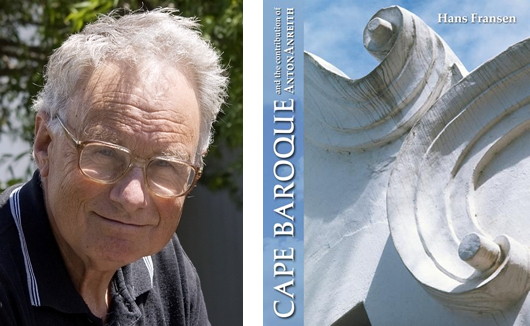
A NEW BOOK BY Dr Hans Fransen, the leading authority on Cape Dutch architecture, intends to shed new light on the Cape Baroque style through an examination of the work of the sculptor Anton Anreith. Cape Baroque and the contribution of Anton Anreith offers us the hefty subtitle of ‘A stylistic survey of architectural decoration and the applied arts at the Cape of Good Hope 1652-1800’, covering the period of the Dutch East India Company’s rule at the Cape.
The author investigates (says the publisher’s note) whether, and to what extent, the surprisingly rich body of Cape material culture can be seen as part and parcel of the international Baroque: that ebullient style of painting, architecture, and design that swept across Europe and some of its spheres of influence. After a highly interesting account of the origins of the Baroque in Italy and of its development in other parts of the world, the author concludes that ‘Cape Baroque’ does indeed form part of this. But he also points out that it has a very distinctive character of its own.
The book of 180 pages contains over 200 illustrations, mostly from the author himself, whose other works include The Old Towns and Villages of the Cape, The Old Buildings of the Cape, Drie Eeue Kuns in Suid-Afrika, and the introduction to A Cape Camera, the book illustrating the photography of early Cape photographer Arthur Elliott.
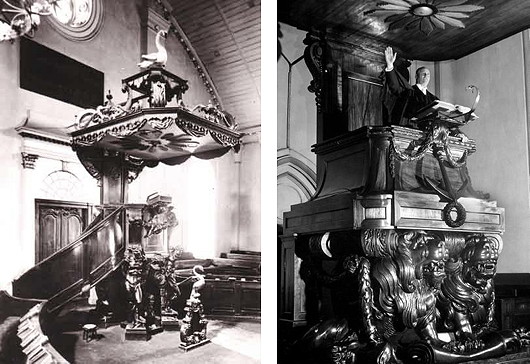
The sculptor Anreith, born in Germany at Riegel between the Rhine and the foothills of the Black Forest, was the finest and most florid artist of the Baroque in the Cape of Good Hope. His exceptional work on the pulpit of the Lutheran Church in Cape Town provoked the envy of the more prominent Dutch Reformed congregation, who quickly commissioned Anreith to carve an even more ornate pulpit for the Groote Kerk.
by Dr Hans Fransen, 160 pages, R250
deur Dr Hans Fransen, 160 bladsye, R250
Papal Mace for St Andrews
Archbishop Presents New Mace to Scotland’s Oldest University Amidst 600th Anniversary
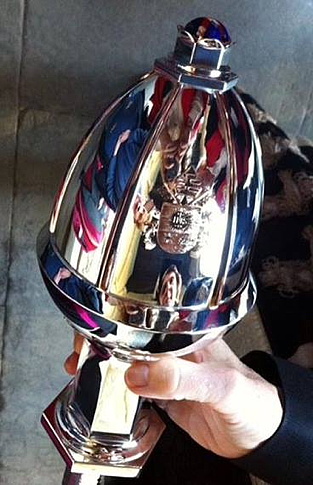
Above: The 600th Anniversary Mace.
Below: The University’s three medieval maces:
St Salvator’s College, 1461; Faculty of Canon Law, circa 1450; Faculty of Arts, 1416.
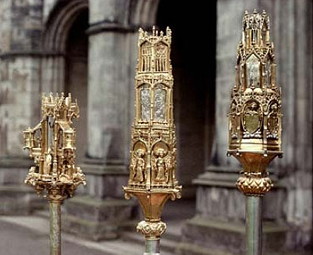
ST ANDREWS University already boasts the world’s finest collection of medieval maces, but a new ceremonial mace was added to the university’s hoard recently. In honour of the University’s six-hundredth anniversary, the Most Rev Leo Cushley, Archbishop of St Andrews & Edinburgh, has presented the institution with a new ceremonial mace on behalf of the Catholic Church.
“This completes a triple recognition of the University St Andrews,” said Dr John Haldane, the University’s professor of philosophy.
“During his visit to Scotland at the outset of this decade, Pope Benedict referred to the university beginning to mark the 600th anniversary of its foundation, then last year Pope Francis sent a message of congratulation, and now his office has granted permission for the inclusion of his coat of arms on the head of a mace commissioned to mark the completion of several centuries and the beginning of who knows how many more.”
The silver mace with gold rose details was crafted by Hamilton & Inches of Edinburgh, who also constructed the mace of the Faculty of Medicine at St Andrews over a half-century ago. Their master silversmith Jon Hunt designed the mace, in consultation with Prof Haldane.
The mace’s head is reminiscent of Brunelleschi’s dome of Florence Cathedral, recalling St Andrews’s links with the Continent which were foremost in the University’s first century and a half while it was a Catholic institution. Atop the head a saltire design is incorporated, referencing the apostle who gave his name to both the Royal Burgh and the University as well as the country who’s first university St Andrews is.
Heraldic shields display the arms of the University and of Pope Francis who invoked “upon all the staff and students of the University, past and present, the abundant blessings of Almighty God, as a pledge of heavenly peace and joy”. (more…)
Change in the air at the Catholic Herald
Title will cease to operate as a newspaper and relaunch in magazine format
Britain’s leading Catholic publication, the Catholic Herald, will be relaunching as a magazine before the end of this year. Invites have already gone out to an event celebrating the change to be held in early December.
The relaunch might be interpreted as a move against the Tablet, which styles itself “the international Catholic weekly” and has been nicknamed “The Bitter Pill” by English Catholics for its widely perceived lack of faithfulness to Catholic teaching. The Tablet is associated with the country’s old liberal Catholic elite, counting among its trustees such figures as Chris Patten and Sir Gus O’Donnell. A Herald reader, meanwhile, is more likely to be young, intellectual, and strongly influenced by John Paul II and Benedict XVI.
When told of the news, one young churchman welcomed the change as a good move for the generally orthodox Herald against its looser rival. (more…)
New Yorkers: See New York!
Old-School Ads Employed for City’s Internal Tourism Campaign

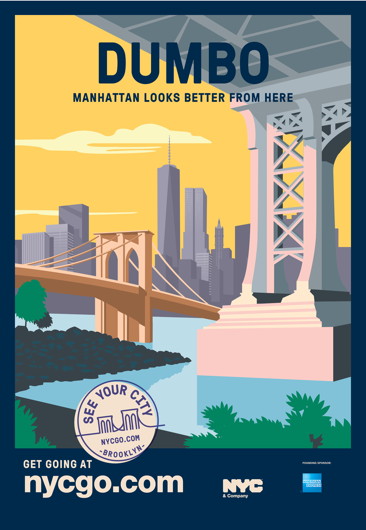
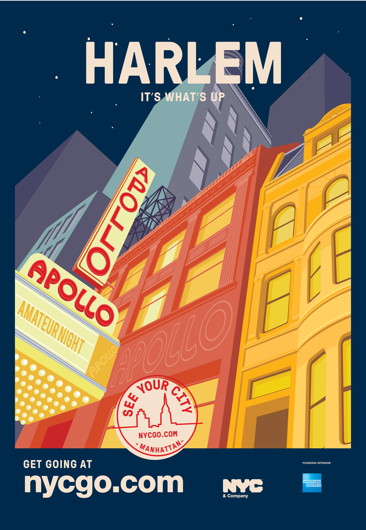
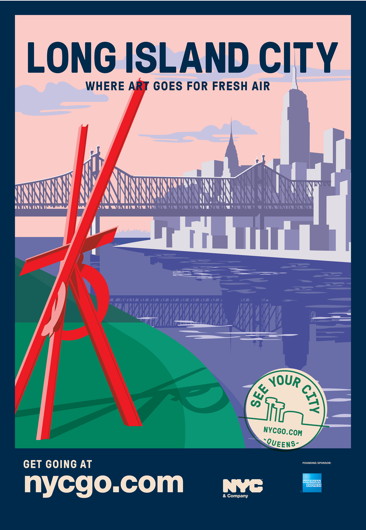
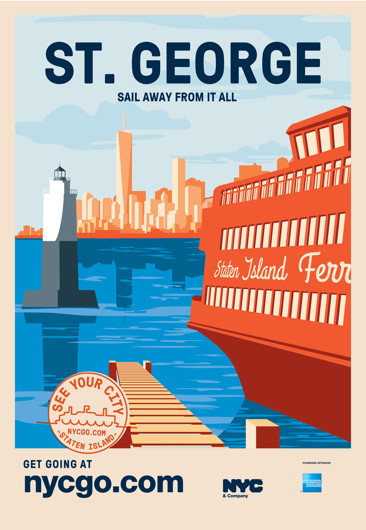
NYC & Company, the official tourism and marketing board of New York City, has cottoned on to the fact that in such a vast metropolis many parts of the city are virtually unknown to the natives of whichever particular borough.
They recently launched the ‘See Your City’ campaign encouraging New Yorkers to visit places perhaps less familiar to them within their own city. Part of the campaign involves the above series of posters for display in bus shelters.
The style evokes old-school travel posters of the 1920s & 30s, and NYC&Co commissioned one for each of the five boroughs.
Elsewhere: Adweek | New York Times | Untapped Cities | NYCgo
Russia’s Classical Future
Design chosen for St Petersburg’s new judicial quarter
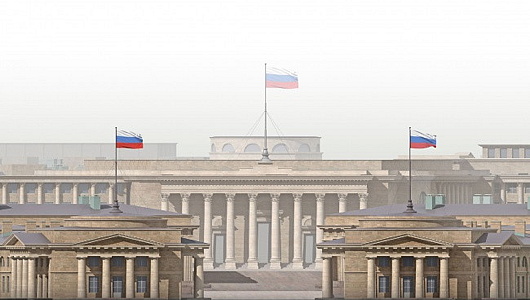
While a vast and multifacted state, the Soviet Union was nonetheless one in which power was highly centralised, not just within one city — Moscow — but even within one complex of buildings, the Kremlin. For the past fourteen years, however, a St Petersburg boy — Vladimir Putin — has been the man at the helm of the ship of state, and while Moscow is still the top dog St Petersburg is increasingly stealing the limelight. The number of commercial bodies (several subsidiaries of Gazprom, for example) moving from Moscow to St Petersburg is growing, and even a few government departments and other entities have moved back to the old imperial capital.
Among these is the Constitutional Court of the Russian Federation, which transferred to the old Senate and Synod buildings in St Petersburg in 2008. The Supreme Court and Higher Arbitration Courts have yet to make the move, however, and a scheme by architect Maxim Atayants has been chosen as the winner of the design competition for the new judicial quarter on the banks of the Neva. (more…)
Evolution of a Napoleonic Parliament
The Salle des états in the Palais du Louvre
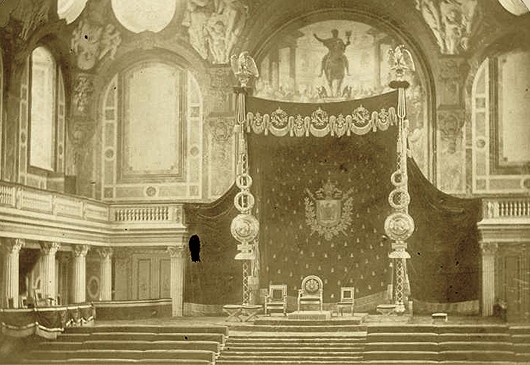
Among the numerous rituals of the ordinary visitor’s pilgrimage to Paris — trip up the Eiffel Tower, lunch at a tourist-trap café — braving the teeming hordes in the Louvre to view da Vinci’s ‘Mona Lisa’ ranks near the top. What very few of the camera-toting hordes realise is that they are shuffling through the room that once housed France’s parliament. The history of the Palais du Louvre is long, exceptional, and varied.
Originally built as a stern castle in the 1190s, the Louvre’s secure reputation led Louis IX to house the royal treasury there from the mid-thirteenth century. Charles V enlarged it in the fifteenth century to become a royal residence, while François Ier brought the grandeur of the Renaissance to the Louvre — as well as acquiring ‘La Gioconda’. In 1793, amidst the revolutionary tumult, part of the palace was opened to the public as the Musée du Louvre, but the Louvre has always housed a variety of institutions — the Ministry of Finance didn’t move out until 1983.
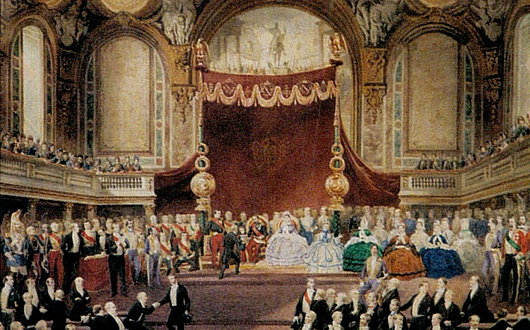
Napoleon III took as his official residence the Tuileries Palace which the Louvre was slowly enlarged towards over the centuries to incorporate. The Emperor needed a parliament chamber close at hand so he could easily address joint sittings of the Senate and the Corps législatif (as the lower house was called during the Second Empire) which opened the parliamentary year. By doing so at his residence, the Bonaparte emperor was following the example left by his kingly Bourbon predecessor Louis XVIII. (more…)
Les jours heureux du Liban
Being an omnivore of nations I’m not short of favourite countries, but the Lebanon is towards the top of my list. I’ve spent some weeks there each summer for the past few years and we’re hoping to return this July (God willing). Friday night B. invited a few of us round for an impromptu supper and in the kitchen I happened to mention that I had met his ambassador the day before — the Lebanese ambassador.
This provoked a lament on B’s part as he relayed the history of his family’s service in the diplomatic corps and of Lebanon in the old days: black-tie dinners, summer in the mountains, the casinos and the glamour of the Beirut he was born too late to experience.
It’s become a cliché for foreigners to cite Beirut’s former glory as ‘the Paris of the Orient’ and Lebanon ‘the Switzerland of the Middle East’. Civil war wreaked its devastation on the country but its revival in more recent years has still been remarkable. Everything, of course, is exceptionally tenuous, but despite the clouds of uncertainty there remains a lot for which to be grateful.
We both wished, however, that today’s ordinary culture in Lebanon was a bit more informed by the style of the past. While old buildings are often restored, far too many of the new buildings are horrendously bland or offensively modern. Perhaps most unfortunately, a large proportion of Lebanon’s women — already endowed with a natural beauty unparalleled in the Middle East — are too mimicking of American styles: nosejobs and dyed blonde hair.
For my part, however, the conversation provoked a little dip into the photographic archives, seeking out some images of Lebanon in its halcyon days. (more…)
The Crowned Banner
The Emblem of the Scottish Parliament
Legislatures often have their own symbols. Often these are appropriated or stylised versions of national emblems. Stormont uses a flax plant. Some time ago Westminster adopted the Tudor portcullis which now represents the Parliament of the United Kingdom — in green for the Commons or in red for the Lords.
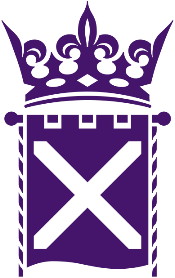 In Scotland, however, the unicameral parliament has adopted a crowned banner as its distinctive insignia. (For previous posts on prominent emblems of modern Scottish design, see the Clootie Dumpling and the Daisy Wheel). The crown expresses authority — ultimately the sovereign power of the monarchy — while the corded banner hanging from a pommelled pole displays the Saltire, Scotland’s national flag. While early versions of the emblem were in blue, it is now standard that the symbol be depicted in purple, long a colour associated with Scotland through the national florae of heather and thistle. (more…)
In Scotland, however, the unicameral parliament has adopted a crowned banner as its distinctive insignia. (For previous posts on prominent emblems of modern Scottish design, see the Clootie Dumpling and the Daisy Wheel). The crown expresses authority — ultimately the sovereign power of the monarchy — while the corded banner hanging from a pommelled pole displays the Saltire, Scotland’s national flag. While early versions of the emblem were in blue, it is now standard that the symbol be depicted in purple, long a colour associated with Scotland through the national florae of heather and thistle. (more…)
End of the Line for Rizzoli Bookshop
Another New York bookshop bites the dust
In New York, good things are only allowed to last a little while: eventually they must all be destroyed. The latest to add to the pile is the Rizzolli bookshop on West 57th Street, which has received notice that the landlords intend to demolish the 109-year-old structure in which the bookshop is housed.
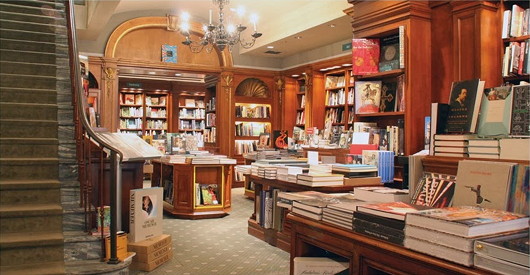
Rizzoli, publishers of some of the finest and most luxuriously printed books on the market, have not yet said whether they will be opening shop elsewhere.
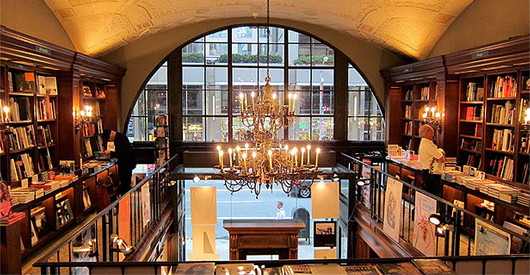
If so, it would be the second move for the shop, which opened in 1967 at 714 Fifth Avenue (below), just around the corner. A developer tried to tear that building down as well, but preservationists managed to have the façade, with its lalique glass, incorporated into the new tower. It’s now home to Henri Bendel.
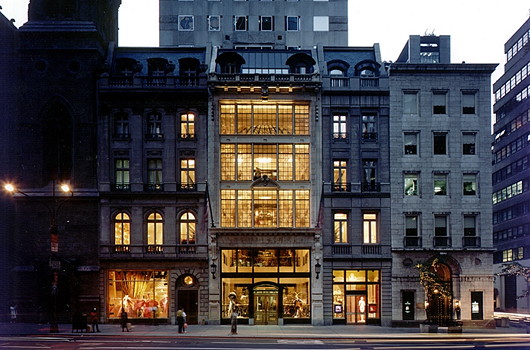
Other New York bookshops to close in recent years include the Librairie française, Coliseum Books, Gotham Book Mart, Urban Center Books, and further back more venerable institutions like Scribner’s and Brentano’s.
Top three photos: Mais Uma Pagina
A Bunny Rampant
The carto-heraldic creativity of MacDonald Gill
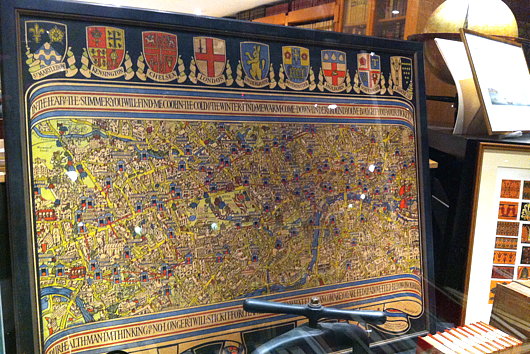
If anything, I am a lover of maps, and as a cartophile it’s a fine thing that I spend half my life in South Kensington. Here you will find two of the best antiquarian map merchants around: the Map House on Beauchamp Place and Robert Frew across from the Oratory and right next door to Orsini. Milling about in front of church after mass today I received a tip-off from a friend suggesting I have a look at the window of Robert Frew, as there was a London Underground map with coats of arms of mostly abolished boroughs.
“Sounds like the sort of thing MacDonald Gill would do,” I said, and sure enough upon investigating earlier tonight it is the work of that inventive designer (and brother of Eric Gill).
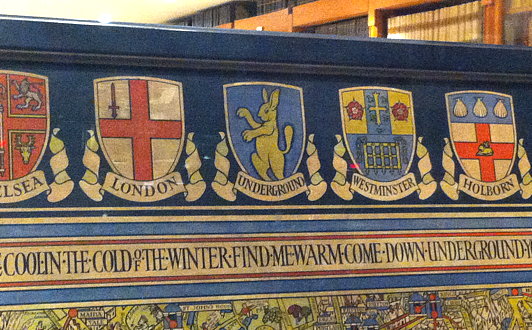
The most splendid and ridiculous aspect is that in the central place among the municipal heraldry was a putative coat of arms MacDonald Gill thought up for the Underground: a rabbit rampant. Indeed, given the twin characteristics of being speedy and digging the earth, the rabbit is a perfect animal avatar for the London Underground to adopt. Don’t go looking for this design anywhere in the rolls of Garter King of Arms, though: it’s merely the invention of the creative mind of master map-maker MacDonald Gill.
Two Flags Based on the French Tricolour
The French tricolour is one of the most influential flags in history, inspiring most prominently perhaps the Italian and Irish flags, but also dozens other, including the nationalist triband flags (like those of Germany, Russia, etc.). Indeed, the national flags of nearly sixty UN member states are based on these vertical or horizontal stripe combinations.
While long identified with revolution, republicanism, and nationalism, the French flag originally represented a combination of the blue and red of Paris — the colours of Saint Martin and Saint Denis — with the white of the French monarchy. Two (non-national) flags based directly on the French tricolour are those of the Acadians in North America and of Franschhoek in South Africa. (more…)
L’Osservatore Romano goes Hungarian
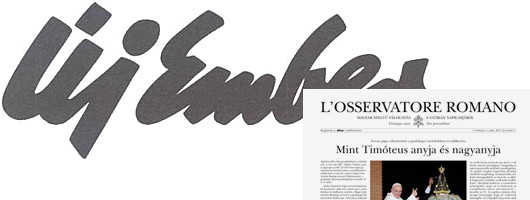
Magyarophiles will be pleased to learn that L’Osservatore Romano, the Vatican newspaper, will begin appearing in Hungarian. The new edition will appear every other week as a four-page insert into Új Ember, the Hungarian Catholic weekly founded in 1945. “We are a small editorial staff,” Balázs Rátkai, editor-in-chief of the weekly, told L’Osservatore.
“However, our intention is to probe and to make our readers think. The collaboration with the Vatican daily is of historic importance for the life of the weekly and of the entire local Church; it not only brings the Universal Church and the Pope closer to us; it will also enrich readers, and through them all of Hungarian society, with new thoughts, opinions and answers.”
Printed as a daily broadsheet in Italian, the Vatican newspaper also has weekly tabloid editions in French, Spanish, English, German, and Portuguese, as well as a monthly version in Polish.
Kolmanskop
Ghost town of the Namib
NAMIBIA IS A LAND that fascinates me, which is perhaps surprising. This arid land is sparsely populated — just 6.6 people per square mile — but its deserts are believed to be the oldest in the world. Those who haven’t experienced its harsh beauty may wonder why this land has attracted its odd and varied collection of peoples, but here the Ovambo, the Kavango, the Herero, the Afrikaner, the German, and the Bushman all call home.
I have already written somewhat about Lüderitz and beyond it the Diaz Point. As you speed down the B4 from Keetmanshoop to Lüderitz — a four-hour drive passing through just the one small village of Aus — you can turn off just before you reach the coastal town and pay a visit to the eerily ghost town of Kolmanskop: Kolmannskuppe in the original German. (more…)
Flags, Northern Ireland, and the Union
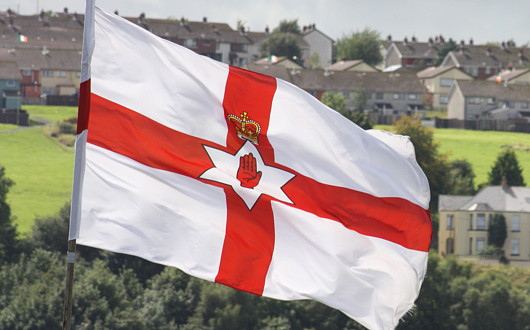
Flags have been in the news of late, perhaps as a late hangover of the disruptive protests over Belfast City Council’s decision to fly the Union Jack from Belfast City Hall only on the United Kingdom’s designated flag-flying days. Ironically, this would have brought the Six Counties further in line with normal British practice, but disgruntled unionists viewed it as a diminution of “their” flag and a bit of a fracas ensued with the once-traditional death threats and intimidation returning.
The BBC raised the issue of how Scottish independence might affect the Union Jack. (Pedants only refer to the British flag as the “Union flag”, but the Flag Institute points out both terms are perfectly acceptable). Scottish independence would have no automatic effect on the flag whatsoever, but it has provoked a round of speculation over what changes, if any, should be made to the Union flag.
Then Richard Haass, the American diplomat charged with chairing the inter-party talks on unresolved issues in the Six Counties, waded into matters vexillological when he wrote to party leaders seeking their views on the possibility of a new flag for Northern Ireland. (more…)
‘Bon Voyage’
Jean-Paul Rappeneau’s ‘Bon Voyage’ (2003) is one of those superb films that come around all too rarely. It manages to balance perfectly all the elements of drama, comedy, action, and romance, set in a convincing historical context.
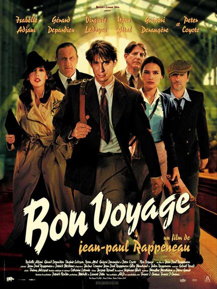
Bon Voyage
Jean-Paul Rappeneau
2003, France
1 hour 54 minutes
In 1940, Viviane Denvert (played by Isabelle Adjani) is a fickle, self-promoting film star who enlists her childhood friend, Frédéric Auger (Grégori Derangère), to extract herself from a compromising situation. As war creeps upon France, Auger finds himself behind bars for Viviane’s crime, but in the confusion of battle he manages to escape with the seasoned ne’erdowell Raoul (Yvan Attal). All of Paris is fleeing the German advance, and on the train to Bordeaux the two come across physics student Camille (Virginie Ledoyen) who helps them reach the western city by car when the train is stopped on the line.
In Bordeaux we come across government minister Jean-Étienne Beaufort, Viviane’s lover whom she uses to get Frédéric out of a sticky situation resulting from her own manipulation of him. Meanwhile, with all of Paris in Bordeaux, Viviane comes across another ex-paramour, Alex Winckler (Peter Coyote), keeping an unnatural interest in the affairs of the government, while the physics student Camille and her mentor Professor Kopolski are harbouring an important cargo they are determined must not fall into the hands of the Germans.
For fear of spoilers, that is all I will say about the plot, but it all comes packaged in a score by Gabriel Yared, better known for his scoring of ‘The English Patient’, ‘The Talented Mr. Ripley’, and Florian Henckel von Donnersmarck’s ‘Das Leben der Anderen’. The film was nominated for eight César awards in 2004 — best costumes, best director, best editing, best film, best original score, best sound editing, best supporting actor, and best writing — while it won three Césars that year for photography, best set design, and, for Grégori Derangère, best promising actor. (more…)
Zeitung für Deutschland
Given my total obsession with the Frankfurter Allgemeine Zeitung it will come as no surprise that my favourite advertising installation is the massive logotype for the world’s greatest newspaper which spans the railway tracks at the Frankfurter Hauptbahnhof.
In glorious Teutonic blackletter, it proclaims the newspaper’s ownership of the city to all comers:
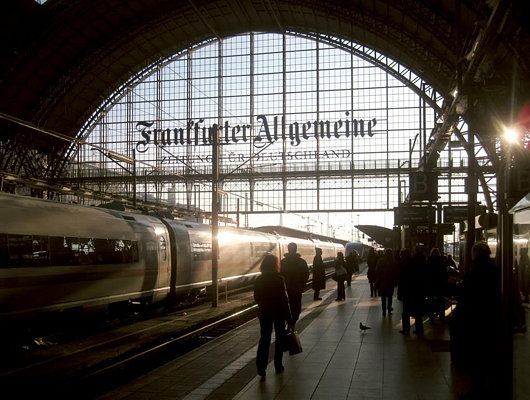
Photo: Erhard Bernstein
And while it looks great in daylight, as the evening descends it is illuminated in neon blue. Like the FAZ itself, old-fashioned and modern all in one.
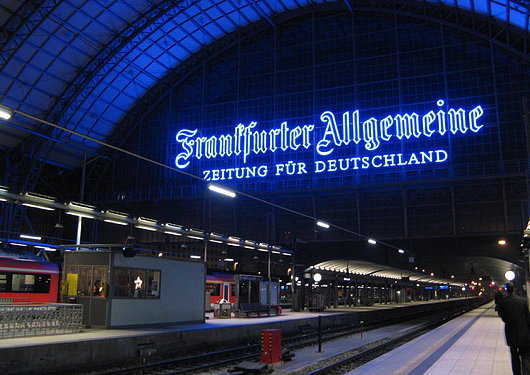
Photo: Otzberg
A Lecture by Andrew Cusack
College of Arms Foundation
and the
Committee on Heraldry
of the New York Genealogical & Biographical Society
cordially invite you to a talk by
ANDREW CUSACK
on

‘THREE ANNULETS OR’
THE VAN RIEBEECK ARMS
& THEIR SOUTH AFRICAN LEGACY
Tuesday 17 September 2013
at
6:00 PM
Reception to follow
New York Genealogical & Biographical Society
36 West 44th Street, 7th Floor
New York, NY 10036
Open to the public. No charge.
Please rsvp to rsvp@coaf.us to reserve a place.
As the founder of the oldest European settlement in southern Africa, he came to be seen as the father of South Africa after the country was unified in 1910. The central elements of his arms — three annulets or — obtained local, regional, and finally national significance, and influenced the design of a wide variety of South African coats of arms, many of which will be examined in this lecture.
A Maori in Buenos Aires
The Argentine stopover of Te Pēhi Kupe
So 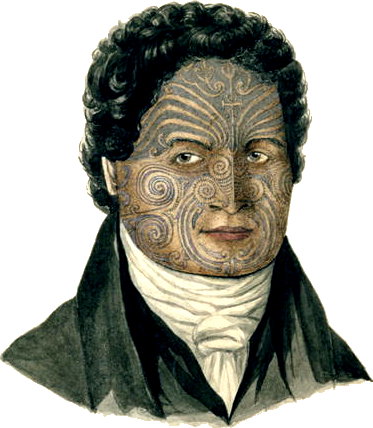 far as I can tell, the first Maori to visit Argentina (or the United Provinces of the River Plate as it was then called) was the young nobleman Te Pehi Kupe in October 1824. (The name is spelt varyingly as Te Pēhi Kupe, Tupai Cupa, Te Pai Kupa, and Tippahée Cupa). Te Pehi was born on the North Island, probably around 1795, and was a senior-line descendant of Toarangatira (founder of the Ngati Toa tribe) as well as an uncle to the more famous Ngati Toa chief, Te Rauparaha.
far as I can tell, the first Maori to visit Argentina (or the United Provinces of the River Plate as it was then called) was the young nobleman Te Pehi Kupe in October 1824. (The name is spelt varyingly as Te Pēhi Kupe, Tupai Cupa, Te Pai Kupa, and Tippahée Cupa). Te Pehi was born on the North Island, probably around 1795, and was a senior-line descendant of Toarangatira (founder of the Ngati Toa tribe) as well as an uncle to the more famous Ngati Toa chief, Te Rauparaha.
Most of New Zealand was a bit of a mess at the time, as various Maori tribes fought each other for land to grow potatoes on. Te Pehi Kupe, being a chief and military leader, was desirous to go to Europe in order to obtain weapons for his tribe. When the British ship Urania went past the southern tip of the North Island, Te Pehi forced himself aboard despite the violent resistance of the ship’s officers and crew. When asked what he desired by the Urania‘s captain, Richard Reynolds, Te Pehi replied in broken English, “Go Europe, see King George”.
Captain Reynolds did not think this a good idea and, knowing the Maori to be good swimmers, tried to have him thrown overboard, but the native nobleman’s physical strength prevented this. (And a good thing, too, as Te Pehi managed to save the Captain from drowning later on in the journey.)
The Urania made its return to England with Te Pehi Kupe aboard, calling at Lima and then sailing around the Southern Cone, where they called in at Buenos Aires. George Thomas Love provides us with an account of the Maori’s arrival in A Five Years’ Residence in Buenos Ayres (published in 1827):
In the month of October, 1824, the visit of a New-Zealand chief to Buenos Ayres, by name Tippahée Cupa, attracted much curiosity; he arrived in the British ship Urania, Captain Reynolds. Tippahée came alongside this ship in Cook’s Straits, with a war canoe filled with his people, and, in spite of the remonstrances and even force used by Captain R. refused to quit the vessel, expressing his determination to proceed to England. He bade his followers an affectionate adieu, enjoining obedience to his successor during his absence. The Urania sailed for London with her passenger the 8th December, 1824.
Tippahée, when he first arrived in Buenos Ayres, was clothed in an old red coat, formerly belonging to a London postman. The English paid him many attentions, inviting him to dine at their houses, and new clothing him. His behaviour at table was easy and unembarrassed; and, when requested, he would perform the dances and war songs of New Zealand. He understood a little of the English language, and spoke a few words of it; his intelligent manners, and circumspect conduct, rendered him an universal favourite.
On the map he could trace the ship’s course from New Zealand to Lima and Buenos Ayres. He knew an Englishman immediately; the Spaniards he did not much admire, fancying they viewed him with contempt, and was glad to get among Englishmen. His age is about forty; he possesses amazing strength; his tattooed face and appearance always attracted a crowd after him in Buenos Ayres.
On board ship he was found very useful, doing all sorts of work, but he positively declined to go aloft. The fate of Captain Thompson, and the crew of the British ship Boyd, ought to bespeak caution in using coercion with these savage chieftains of New Zealand.
In Cruise’s book of New Zealand, Tippahee was shewn a picture of a chief of his country, with which he was greatly delighted. The object of his journey to England is to solicit arms and ammunition, to place him upon a par with a rival chief, who possesses those requisites.
In England, Te Pehi was indeed presented to King George IV. He also learned to ride, visited factories, was given many gifts, and survived the measles before leaving England aboard the Thames on 6 October 1825. In Te Pehi’s absence abroad, peace had been agreed between the Ngati Toa and their Ngati Apa rivals. Ngati Toa eyes soon turned to the South Island, and during the military campaign there Te Pehi Kupe was killed, his body cooked and eaten, and his bones turned into fish hooks.
Still, at least he enjoyed Buenos Aires before he died.
The Dome of the Custom House, Dublin
THE MOST RECENT series of the ITV detective drama “Foyle’s War”, though set in London, was filmed entirely in Dublin. (Ah, those Bord Scannán incentives!). I’ve noticed a phenomenon in which something set in England but filmed in Ireland suffers from English stereotype overcompensation. What this entails is unnecessarily sticking noticeably English ‘things’ (double-decker bus, red pillarbox) into the frame when, if filmed in England, the directors might otherwise be satisfied without these subconscious emblems reassuring the viewer that they are not in fact in the country the programme was actually filmed in.
So two characters meeting on a street of Georgian houses will have a red post box shoved into some arbitrary place on the street to remind us we’re in jolly old England. Despite this, any devotées of the Georgian style will recognise the Irishness of the houses because of the subtle yet noticeable difference between the Georgian styles of, say, London, Edinburgh, Bath, and Dublin.

Anyhow, not to reveal too much of the plot of this latest series, but Chief Superintendent Christopher Foyle is recruited into a post-war British intelligence gathering organisation. The exterior shots of the building used as this group’s headquarters is the Custom House on River Liffey in Dublin, only the show’s producers have digitally removed the building’s prominent dome, presumably in order to make it less distinctive and identifiable. (more…)
Search
Instagram: @andcusack
Click here for my Instagram photos.Most Recent Posts
- Faithful Shepherd of the Falklands April 8, 2025
- Articles of Note: 8 April 2025 April 8, 2025
- Proportionality Destroys Representation April 8, 2025
- Sag Harbor Cinema March 26, 2025
- Teutonic Takeover March 10, 2025
Most Recent Comments
Book Wishlist
Monthly Archives
Categories


